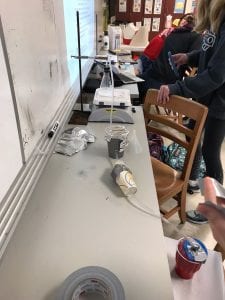The poem “Annabel Lee” by Edgar Allen Poe uses repetition and word choice to portray the theme of love. One of the biggest themes in this poem is love. This poem portrays him and Annabel Lee falling in love, her dying, and him still loving her after her death. Edgar Allen Poe repeats many phrases in this poem including, “ My Annabel Lee”. The use of repetition lets the phrase linger in your head after you have read it, which relates to how his love lingered even after Annabel had died. Also, “my Annabel Lee”, was the phrase that was most repeated, which also shows how much the loved each other, referring to her as his. The author uses the connotation of words and phrases to relate back to the theme of love. Edgar Allen Poe uses phrases like “ It was many and many a year ago” and “ kingdom by the sea” to give fairytale-like characteristic to the poem. Whenever we think of fairy tales, we think of a Prince and a Princess living happily ever after. The author uses these phrases to portray their love as fairytale love, eternal and happy. The use of structure, such as repetition, and word choice portray the theme of love in “Annabel Lee.”
Archives: December 17, 2018
Distillation Lab
For our distillation lab, we were tasked with separating salt, sand, and water from a Erlenmeyer flask. We were given the flask filled salt, water, and sand mixed together. The first thing we did was separate the sand from the salt water. We placed a coffee filter over a beaker and secured with a hair tie. Then we poured the saltwater-sand mixture over top. Because of the different sized particles of the sand, water, and salt, we were able to separate just the sand. The coffee filter allowed the saltwater to pass through and left the sand on top. This is because the saltwater it is a liquid and had smaller particles than the solid sand. Unfortunately, we lost all of our photos of this process.
After that, we had to separate the salt from the water. We had to do this process twice, because we broke the flask the first time. We started by connecting a tube to our flask and then made our cooling stations. We cut two holes in a solo cup, one on each side, passed the tube connected to the flask through it, and filled it with ice. Then we took two large Dixie cups and cut a hole at the bottom of each. We filled one with ice then put the other cup over it, and passed another tube through it. We did not have this cooling station in the first attempt Finally we cut off the bottom of a balloon and placed it over the beaker that collected our water, which was in a solo cup filled with ice. Then we placed the tube through it. We connected each of our tubes with a glass connecter. Then we turned on the hot plate that the flask was on. Because water has a lower boiling point then salt, the water boiled, turned into water vapor, passed through the tubes, and left the salt behind. This is why cooling stations are important. As the water vapor passes through the tubes it goes through the cooling stations, turns into a liquid, and falls into the beaker which is also surrounded by ice. We also made sure to replace the ice that the beaker was in regularly. You can see our set-up for the second attempt in the pictures below.


